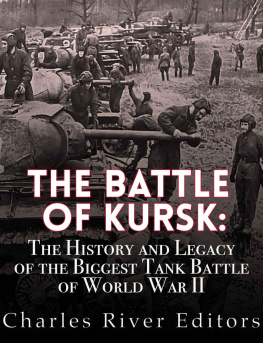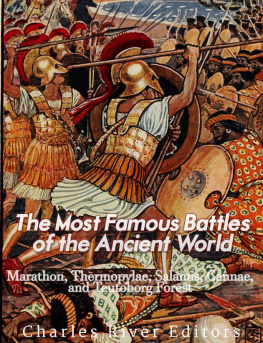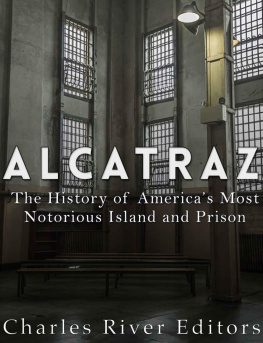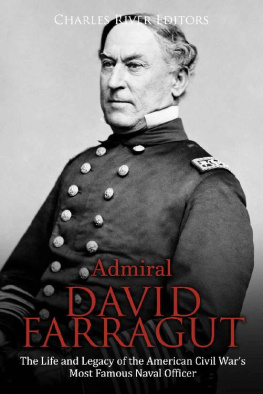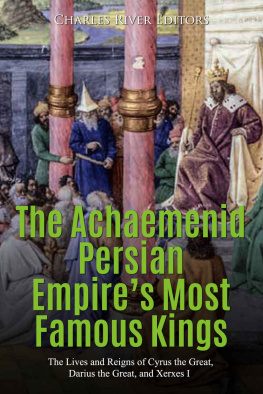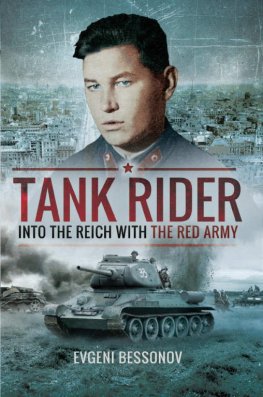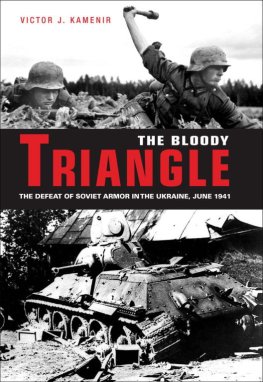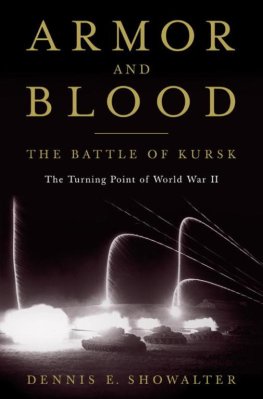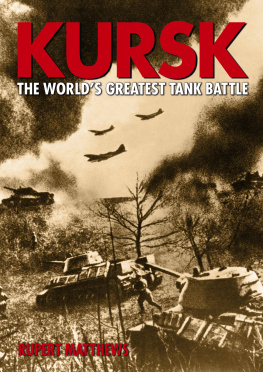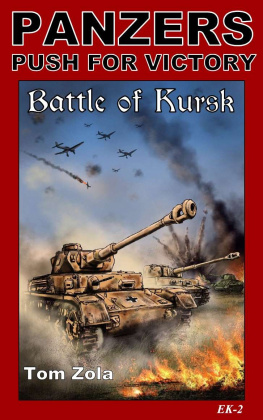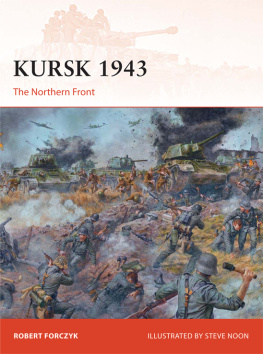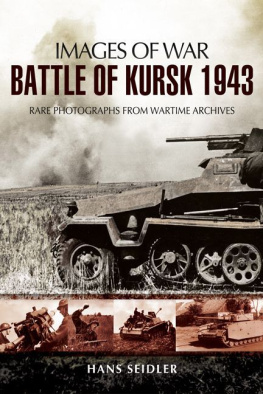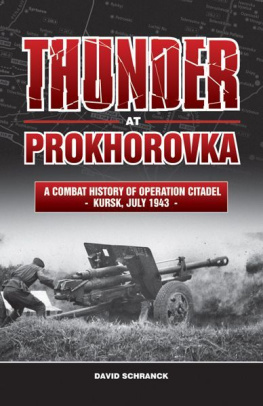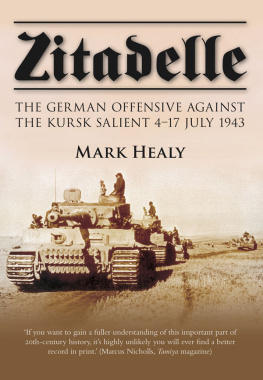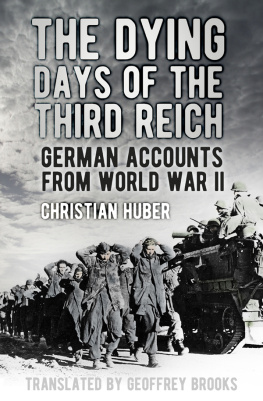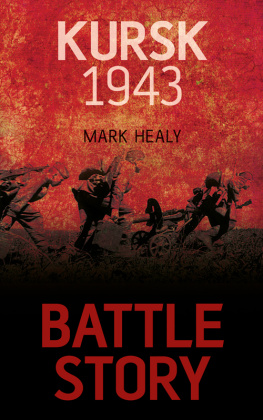The Battle of Kursk: The History and Legacy of the Biggest Tank Battle of World War II
By Charles River Editors
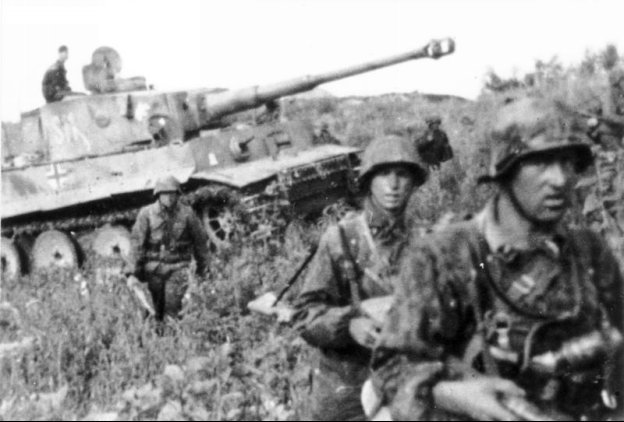
A Panzer Unit at the Battle of Kursk
About Charles River Editors

Charles River Editors provides superior editing and original writing services across the digital publishing industry, with the expertise to create digital content for publishers across a vast range of subject matter. In addition to providing original digital content for third party publishers, we also republish civilizations greatest literary works, bringing them to new generations of readers via ebooks.
Sign up here to receive updates about free books as we publish them , and visit Our Kindle Author Page to browse todays free promotions and our most recently published Kindle titles.
Introduction
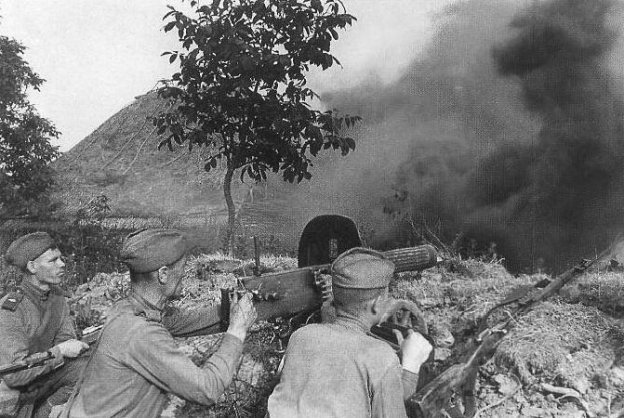
A Soviet machine gun in action at the battle
The Battle of Kursk
The Russians have learnt a lot since 1941. They are no longer peasants with simple minds. They have learnt the art of war from us. Wehrmacht Generaloberst Hermann Papa Hoth at Kursk (Healy, 1992, 90)
On the German side, the reserves which will become so desperately necessary as the war situation develops [] will be tied down and thrown away uselessly. I consider the operation that has been planned a particularly grave error, for which we shall suffer later. Colonel Reinhard Gehlen, Wehrmacht intelligence analyst, writing about Operation Citadel (Fowler, 2005, 66).
The vast expanses of southern Russia and the Ukraine provided the Eastern Front arena where the armies of Third Reich dictator Adolf Hitler and Soviet dictator Josef Stalin wrestled lethally for supremacy in 1943. Endless rolling plains ideal tank country vast forests, sprawling cities, and enormous tracts of agricultural land formed the environment over which millions of men and thousands of the era's most formidable military vehicles fought for their respective overlords and ideologies.
The winner could expect to reap very high stakes indeed. If Hitler's Wehrmacht smashed the Red Army, he could no longer hope for a lightning conquest, but the Fuhrer could expect the Soviet strongman to sue for peace on terms advantageous to Germany. If, conversely, the Red Army triumphed, Stalin could continue rallying the Soviet Union and move closer to expelling the loathed Nemets invaders from Russian soil and perhaps carve out a Soviet empire in Central Europe.
Asserting that changes in the military leadership style of the two contending dictators explains the outcome of Kursk oversimplifies the actual situation. Logistics, the emergence of a body of experienced junior officers in the Red Army, American Lend-Lease shipments, German production problems, and other issues all contributed to the observed result.
However, the overarching factor tying everything together remained the changing approach of each leader to their army. At the start of the war, Hitler gave his commanders considerable initiative while Stalin fatally micromanaged his, and the Germans ripped vast hordes of Soviets to shreds with comparative ease. In late 1942 and moving into 1943, Hitler commenced micromanaging the Wehrmacht, and Stalin adopted a more hands-off approach permitting his commanders considerable initiative: At the heart of the Red Army's lopsided tank losses was an amateurish and self-destructive style of decision imposed by Stalin [] In November 1942 there was a subtle shift in the Red Army, as months of military disasters finally caused Stalin to reduce some of his interference [] and allow quiet professionals such as Vasilevsky, Vatutin and Rokossovsky to prepare proper offensives. (Forczyk, 2013, 257).
Though the Wehrmacht remained too formidable and professional to collapse as readily as the appallingly low-quality Red Army had in 1941 and early 1942, the Red Army slowly got the upper hand and achieved strategic offensive momentum. That the shift occurred at the moment when Hitler hamstrung his generals with his melodramatic obstructionism while Stalin gave his some operational breathing room probably represents no accident.
Kursk represented the transitional battle during which the Red Army first demonstrated its new capabilities. The Soviets possessed better commanders than at the start of the war, a numerous soldiery, good-quality equipment (in particular, the T-34 tank), and the beginnings of a professional officer corps. Nevertheless, it required personal, ham-handed intervention by Adolf Hitler to transform Kursk from a probable hard-won Wehrmacht victory into a marginal but highly significant defeat.
The Battle of Kursk: The History and Legacy of the Biggest Tank Battle of World War II chronicles the crucial battle that became a turning point in Russia for both sides. Along with pictures of important people, places, and events, you will learn about Kursk like never before, in no time at all.
Chapter 1: Preparations for Operation Citadel
The military actions of previous years set up the conditions resulting in the Battle of Kursk in July 1943. Following the utter devastation wreaked on the unprepared Red Army in 1941 during Operation Barbarossa, the Germans encountered steadily increasing Soviet pressure. A sort of seesaw alternation of offensives ensued, in which the Germans went on the attack during the summer months and the Soviets counterattacked in winter.
Hitler's Fall Blau offensive in 1942 aimed to seize the Caucasus oil fields, but failed to do so. Instead, stripping the rest of the Wehrmacht lines of units led to the encirclement and destruction of the 6 th Army at Stalingrad. The Soviets carried out a strong counteroffensive in southern Russia and the Ukraine during the winter of 1942-1943. The Red Army seized the city of Kharkov, then lost it again on March 14 th , 1943.
Though the Wehrmacht eventually contained the Soviets, the attack created a massive salient centered on Kursk. A pause followed as the spring Rasputitsa the Russian thaw, which turns dirt roads and fields alike into seas of sticky mud a yard deep or more brought both armies to an effective halt.
The Kursk salient, jutting from Soviet into German territory, measured 74.5 by 118 miles, or around 8,700 square miles, approximately the same size as the entire U.S. state of New Jersey. Containing huge numbers of Soviet soldiers and tanks, it made an extremely tantalizing target for a battle of encirclement, such as those that devastated the Red Army in 1941 and to a lesser degree in 1942. If the Germans could pinch off the salient at the base, the Soviet war effort might suffer a sufficient blow for Stalin to seek peace.
The attack on the Kursk Salient codenamed Operation Zitadelle or Citadel also represented a slave raid on a giant scale. With serious manpower issues, the Germans needed slaves to increase factory production and make large numbers of the new, advanced tanks and aircraft their scientists developed. Hitler hoped Citadel would yield hordes of prisoners to man the Third Reich's factories.
The coming offensive provoked a surprising amount of argument in the high commands of both the Wehrmacht (OKW) and the Red Army (STAVKA). Stalin wanted another bold offensive, and Deputy Commander-in-Chief Marshal Georgi Zhukov and Chief of General Staff Marshal Aleksandr Vasilevsky found themselves called upon to muster all their courage and oppose their dictator's wishes. Zhukov declared:

